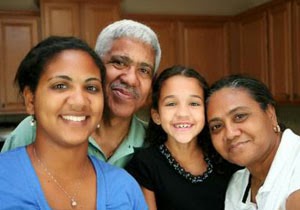 More and more families today are combining households to provide care and support for aging parents. Aging parents often move in with an adult child and that child’s family later in life when they need care or financial support. Often these moves are done in crisis or anticipation of a crisis and with very little, if any, planning.
More and more families today are combining households to provide care and support for aging parents. Aging parents often move in with an adult child and that child’s family later in life when they need care or financial support. Often these moves are done in crisis or anticipation of a crisis and with very little, if any, planning.
Planning is essential to ensure the success of these living arrangements. Before families combine households, the family should have a written plan as to how the relationship will work and what obligations each party has. Answering these 10 questions can help families avoid the stress and conflict that often arises when aging parents move in with adult children:
1. Is this adult child and her family financially, physically and emotionally able to add aging parents to the household? Caregiving obligations increase the stress on the caregiver and her family. If the adult child caregiver’s family is already experience financial, medical or emotional stress, it may not be practical for the family to take on the responsibility of caring for aging parents.
2. What areas of the home will be exclusively used by the aging parents or the adult child and her family? Aging parents will need a place to sleep, store personal items and clothing, and have quiet private time to unwind and care for their daily needs. Before aging parents move in, both parties should be clear about what rooms or areas of the home are exclusively in the possession of each family member and the rules for using the common areas.
3. What are the financial obligations of the aging parents and adult child when parents move in? Combining households increases the costs to the adult child’s household. The adult child and the aging parents should clearly what each is obligated to pay and put these obligations in writing. Any financial arrangements should be fair based on the space used, the actual increase in costs, and the use of amenities by additional household members.
4. Who will be responsible for the day-to-day maintenance of the household? In other words: Who is going to do chores? With more people in the home, there will be more housework, larger meals to prepare, and more laundry to do. Arrangements for meal preparation, shopping, transportation, housekeeping, and laundry should be clearly defined. These arrangements can be amended as an aging parent’s ability to assist decreases, but everyone should be made to feel valued and not taken advantage of.
5. What, if any care, do the aging parents or extended family members expect the adult child and her family to provide? If aging parents are moving in with an adult child for assistance, everyone should be clear what that assistance will include. The stress of caring for aging parents can be overwhelming and lead to medical and financial problems for the caregiver. Therefore, care arrangements should accommodate the caregiver’s work schedule, regular respite, and financial resources of the combined family. It is recommended that the care arrangements be in writing to avoid future confusion or family conflict.
6. Will the adult child or her family be paid for providing assistance to aging parents? If the adult child or her family is going to be paid for providing care, that agreement should be put in writing. The agreement should specify what care will be provided for the rate of pay.
7. Are care providers who assist the parents allowed in the home and who screens them? Since the home is shared by more than just aging parents, a family must decide who is allowed in the home and under what circumstances. If a caregiver for an aging parent gets hurt in the home, the adult child may be the one who is sued for the injuries. Because of this liability, the family must come to an agree regarding who can be in the home and for what purpose.
8. What home amenities will be available to the aging parents? The use of basic things like television, phone, and internet can sometimes create conflict in combined households. To avoid this, the family must determine whether the aging parents will have access to these amenities or be required to purchase their own to be used exclusively in their private space.
9. When can visitors come to the home, who can stay, and for how long? When a household contains two families, often with children and adults with disabilities, the family must be clear about who can visit, when and whether visitors are allowed to stay overnight. For example: Extended family members who are not part of the household may expect to visit the aging parents at any time and even spend the night at the home. If this is not possible, that should be made clear to everyone in the household and to all extended family members. These same considerations should be made with regard to visitors of the adult child and her immediate family.
10. Under what circumstances will the aging parents have to find other care arrangements? Ultimately, there may come a time when an adult child and her family are unable to provide for the care of the aging parents. Families must discuss this before it occurs and create a plan for an orderly transition at that time.
For more information and help in developing a plan for combining households to accommodate aging parents, contact an elder law attorney in your area.


